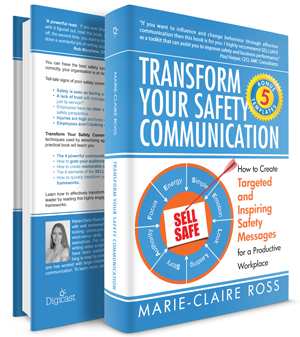
Safety professionals often complain about how hard it is to get people to listen to them about safety. This is often a subtle sign that it might be time to change how...
 Research has found that the majority of workers have seen their workmates engage in risky safety behaviour.
Research has found that the majority of workers have seen their workmates engage in risky safety behaviour.
Yet, very few people will speak up and let a fellow worker know that their behaviour is unsafe.
But speaking up isn't always easy to do.
Reasons for Avoiding a Safety Conversation
The reasons for avoiding a safety conversation can be many, such as:Companies that are best-in-class when it comes to safety have a culture where letting peole know that a practice is unsafe is part of a healthy discussion. Staff need to feel that they can speak up and intervene when someone is being unsafe.
One of the reasons people do not speak up (and I know because I used to be one of them) is that they don't know how to talk about it.
In the book, Conversations for Change, by Shawn Kent Hayashi, she outlines a helpful six step process for confrontation. I've used this template to create a safety conversation plan.
This conversation plan assumes that the safety conversation is occurring after all of the right safety induction training has been undertaken.
Six Step Plan for a Difficult Safety Conversation
1. Approach the person with an attitude of solving a problem.
Lack of self-awareness is one of the major reasons people work unsafely. Often, people might not even be aware that they are being unsafe, as their unsafe behaviour has become an ingrained habit.
When initiating a difficult safety conversation, start with the assumption that the person did not even know they were being unsafe (rather than start blaming them or treating them like they were deliberately doing the wrong behaviour).
Make sure you do this when you are feeling calm.
2. Describe their behaviour objectively
Avoid criticisizing or reprimanding, as this will make people switch off to your message.
"I noticed that you went up the ladder this morning on your own and that you did not ask for any-one around you to hold the ladder".
3. Express your feelings and thoughts about the person's behaviour
"I feel concerned that you could injure yourself".
This creates an emotional connection to the information and let's the person know that you care about them (rather than just want to tell them off).
4. Let them know what behaviour is expected.
"I'd prefer that next time you go up a ladder that you ask for someone to hold it. It doesn't matter how quick you're going to be, you need someone to keep it steady". Or "May I suggest...."
5. Explain the benefits that will result from the new behaviour
"If you do that, you'll be able to go home safely and other people around will also be more likely to work safely and not take shortcuts".
6. Ask for commitment to the new behaviour
"What will it take for you to use the ladder safely?
"Will you agree to this?
"Can I count on you?"
"How do you intend to work more safely here?"
With any conversation, you do have to tailor it to your audience. These six steps are a guideline and do not have to be used word for word. Just make sure you ask for commitment at the end, as social psychology studies show that this is how you get people to modify their behaviour.
Effective workplace safety communication is vital to get staff and contractors aligned and working towards a positive safety culture.
Empower everyone in your workplace to have the right communication skills and the support to confront anyone (whether that's their boss, the cleaner or their peers) and have a safety conversation. It's one big step towards having a brilliant safety culture and an incredibly safe workplace.
Related Stories:
For Safety Professionals: An Interview with Communications Specialist Kris Cole

Safety professionals often complain about how hard it is to get people to listen to them about safety. This is often a subtle sign that it might be time to change how...

Marie-Claire Ross, author of the highly acclaimed book, Transform Your Safety Communication, is helping safety leaders and safety professionals improve their safety...